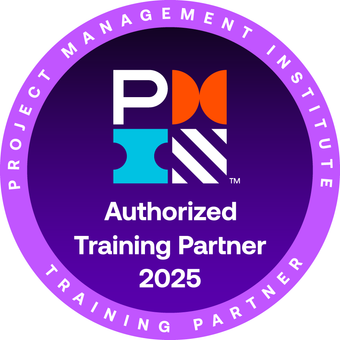Welcome to the PMO Strategies Podcast + Blog, where PMO leaders become IMPACT Drivers!
NOTE: For the very best experience, listen to this episode on your favorite podcast provider here.
This episode is sponsored by:
Revolutionize Project Delivery through Agile Portfolio Management
Download this whitepaper to respond faster to changing priorities, deliver strategic projects more quickly and accurately plan capacity through an Agile approach to portfolio management.
PMO vs. Agile: What’s all the fuss about?
It seems that no matter which side of the line you come down on, people feel very strongly about the way an organization should go about getting projects done. If you are in the PMO or Agile camp, historically, you haven’t seen eye to eye on which approach is best. Is it best to have a PMO? Is a strictly Agile solution the answer?
 Many of those that think Agile is the way to go, believe that the PMO just gets in the way of productivity. Those that believe a PMO is the right answer often think that Agile is the wild west with a lack of process, governance, and clearly defined dates and outcomes.
Many of those that think Agile is the way to go, believe that the PMO just gets in the way of productivity. Those that believe a PMO is the right answer often think that Agile is the wild west with a lack of process, governance, and clearly defined dates and outcomes.
Here’s the truth…
they are both right…
and they are both wrong.
In some cases, the PMO has become too process heavy and overbearing to be the high-IMPACT organization it was intended to be. In other cases, the Agile camp has started off with great intentions, but not stayed true to the spirit and intent of the approach, leading to a less productive, somewhat chaotic, team.
When done right, both the PMO and Agile teams can be highly productive IMPACT Engines that create high-value outcomes for the organization. The key is in combining the why with the what and the how.
Finding Common Ground: The Why
Before we get into ways to see this from both perspectives, it’s important to take a step back and look at some commonalities between the two mindsets. Yes, that’s right. Let’s stop trying to make the case for why things won’t work and look at all the ways we can all just get along and combine forces to create a league of superheroes that can really Get. It. Done. (Yes, my son has me watching all the superhero TV series with him these days.)
The first question we must ask is always “What business problem are you trying to solve?” The answer to that question helps us understand why we are here and what value we can serve in the organization. Understanding your why statement makes it a lot easier to use our best thinking to develop a clear solution to address the business problem or opportunity your stakeholders are looking to solve.
Note: If you have not listened to episode 001-008, I highly recommend you check out those episodes because I dive deep into the IMPACT PMO Leader Mindsets that you’ll want to embrace as you build, run, and deliver value through your PMO or Agile organization.
After that, you’ll want to dive into episode 019: Questions to Ask Before Starting a PMO and then 020: The Secret to a PMO They’ll Love.
What we need to keep front and center in our thinking is this: both camps should be focused on the same end game – helping an organization get projects done the best way they know how. While that “know how” might be different for each perspective, the concept of the greater good must be paramount in our thinking, approach, and actions. We are ALL here to serve that goal of helping the organization create IMPACT.
If we are too caught up in the process being the end game, we are completely losing sight of this goal. Remember, process is the means not the end. Let us never forget, none of us are here if we don’t have projects to do in the first place and if we cannot get those projects done in a way that delivers high-IMPACT outcomes to our organization, we become irrelevant…all of us…regardless of which side of the project management fence we are on.
By putting our “us and them” mindset aside, we can figure out how we take that common goal and use our best combined thinking to come up with a solution that fits the organizational needs most effectively. While many of us get quite passionate about our favorite methodology, if we get too caught up in the way we are implementing our projects (to the point of being blind to other possible solutions), we might forget the why.
Get Clear on Terminology and Meaning: The What
To get to the highest-IMPACT outcomes together, we first need to level set on some terminology. Project Management is NOT the same as implementation methodology.
Project management is the application of processes, methods, knowledge, skills, and experience to achieve project objectives.
– Association of Project Management
Hmmm…sounds a lot like what we are all here to do, yes?
If you look at the project management best practice guides out there, you will see that there is a big emphasis on what you should do and the what is the same across all methodologies chosen for implementation. You “gotta” manage risk, schedule, scope, cost, communication, stakeholders, etc. Don’t we do that in every implementation methodology?
I would love to see an Agile project done right that did NOT take into account the risks that needed to be managed, the schedule (albeit a different way to manage a schedule than waterfall for example), scope, cost, communication, stakeholders, etc.
So, what makes us think that Agile isn’t project management? Isn’t it an approach for getting projects done? Do you manage risk in Agile? How about communication? And stakeholders? Here’s a hint: EVERY implementation methodology that’s any good, will address every aspect of project management “gottas,” while also giving you an approach to creating and delivering the outcomes. The differences we see aren’t with project management, but how we go about creating those outcomes– that’s implementation methodology.
Seems to me we have a lot of common ground so far…right?
Let’s take it even one step further. Have you read the Agile Manifesto? It will take you about 30 seconds to read and maybe 5 seconds to see how much it aligns with the focus we should ALL have on our projects, regardless of implementation mythology. While originally designed as a solution for software development, I believe it’s a perfectly suitable solution for implementing all kinds of projects.
We are uncovering better ways of developing
software by doing it and helping others do it.
Through this work we have come to value:
Individuals and interactions over processes and tools
Working software over comprehensive documentation
Customer collaboration over contract negotiation
Responding to change over following a plan
That is, while there is value in the items on
the right, we value the items on the left more.
Now let’s look at the PMO perspective.
Somewhere along the way, the PMO got stereotyped as the process-heavy organization that is responsible for simply defining and executing on implementation methodology. While best practices (think project management) and implementation methodology are certainly a part of what a PMO can do to help create consistency and reliability in project delivery for an organization, that’s certainly only scratching the surface of what a PMO can do.
Oh, and by the way, who said a PMO is ONLY about “classic” waterfall implementation methodology? While many people think “waterfall” when they think PMO, I’ve seen and personally run many PMOs that apply a much more iterative framework for getting projects done and achieving outcomes. We also need to get clear that project management is not synonymous with waterfall either. Project management is the “must dos” and the implementation methodology is the approach to doing the “must dos” to achieve the outcome.
Do More Together: The How
Instead of spending so much energy fighting to make our differences known, how about we focus on how we can COLLABORATE to deliver for the organization?
As many Agile experts will tell you, Agile isn’t the answer to every problem, all the time, just as a PMO isn’t always the answer either. The best solution to deliver the highest possible IMPACT on projects might actually be leveraging the best of both, or a hybrid approach.
I believe the opportunities to leverage a PMO to help an organization deliver IMPACT are endless. I also believe implementing a more Agile-like approach to projects has some huge benefits.
Agile Implementation Methodology Benefits that Align with a High-IMPACT PMO:
- Increased customer engagement, leading to a solution that has a higher likelihood of use. Higher likelihood of use means higher likelihood of creating intended IMPACT and return on investment (ROI).
- Increased project control. Yes, that’s right. Using Agile can increase your control and governance of the project work and deliverables.
- Faster ROI. You can get products, services, deliverables to market faster if you do it in stages, thereby reaping some benefits.
- Reduced risk. With greater insight, oversight, and shorter cycles, you have a greater chance of minimizing risk realization and impacts.
- Higher deliverable quality through that increased engagement and more interactive requirements-solution development cycle.
- Greater agility. The ability to shift as the needs and requirements change is critical to ensuring we achieve that high-IMPACT outcome.
- Increased collaboration across the project team. Everyone is talking to everyone and everyone knows what’s going on. This is the heart of effective project communication.
- The techniques originally designed for software development apply to many types of projects such as process improvement initiatives, marketing projects, sales cycle improvements, etc. When the goal is improvement, there are many ways the “tweaking” approach can be useful in getting us to a highly tuned solution.
As you can see, there are plenty of benefits to be gained by leveraging the best of both worlds. We can leverage the PMO construct and team to handle many of the services that an organization requires to oversee an entire project portfolio, build competencies through training and coaching, manage tools and resources, and keep stakeholders engaged and effective through the change process. The project teams are then freed up to have a laser-focus on project delivery and achieving outcomes, using the best mechanisms for creating return on investment for each project undertaken.
Ways a PMO Can Support Agile Projects
A PMO can provide all sorts of services that can benefit any organization regardless of methodology chosen to implement projects. Here are some examples of services a PMO can provide that are not necessarily “covered” within the confines of a singular Agile project:
- Provide coaching, training, and support on the implementation methodology of choice (the How)
- Act as an advocate for the use of best practices and methodology across the organization, as well as assisting with best fit implementation methodology selection for each project
- Provide governance and oversight to the portfolio, balancing shifting priorities, resource allocation, and conflicts
- Provide career development, mentoring and opportunities for growth for PM/Scrum Master
- Ensure project management (the What) is fully understood and at the forefront of thinking regardless of implementation methodology chosen
- Establish and collect project and portfolio metrics to ensure proper performance and high-IMPACT project outcomes
- Provide organizational change management support and guidance (the true differentiator between successful and failed projects – how well they bring people along with the change)
- Ensure properly educated and engaged stakeholders and sponsors
- Ensure process excellence and continuous improvement of approach and execution
- Provide strategic planning support and ensure strategic alignment of all projects
- Ensuring adherence and application of the implementation methodology and best practices to increase reliability and predictability of project performance and ability to meet expected outcomes
If you have a team doing these things, then you have a PMO (project management office), whether you call it that or not. If you don’t, you may want to consider how engaging a team to perform these critical services can help ensure that the people doing the project work can focus on doing the project work. This alone can improve project throughput and productivity. Outsource what you are not best at so you can focus all energy on what you do best and then do that. Then you create space for this PMO function to do some of these other support functions so that the people that are knocking out the projects and achieving the IMPACT can focus on doing just that.
The opportunity here for all of us is to work together to find the best fit solution for our organization. That’s where the magic will happen. That’s where you will create the biggest IMPACT.
T hanks for taking the time to check out the podcast!
hanks for taking the time to check out the podcast!
I welcome your feedback and insights!
I’d love to know what you think and if you love it, please leave a rating and review in your favorite podcast player. Please leave a comment below to share your thoughts. See you online!
Warmly,
Laura Barnard




